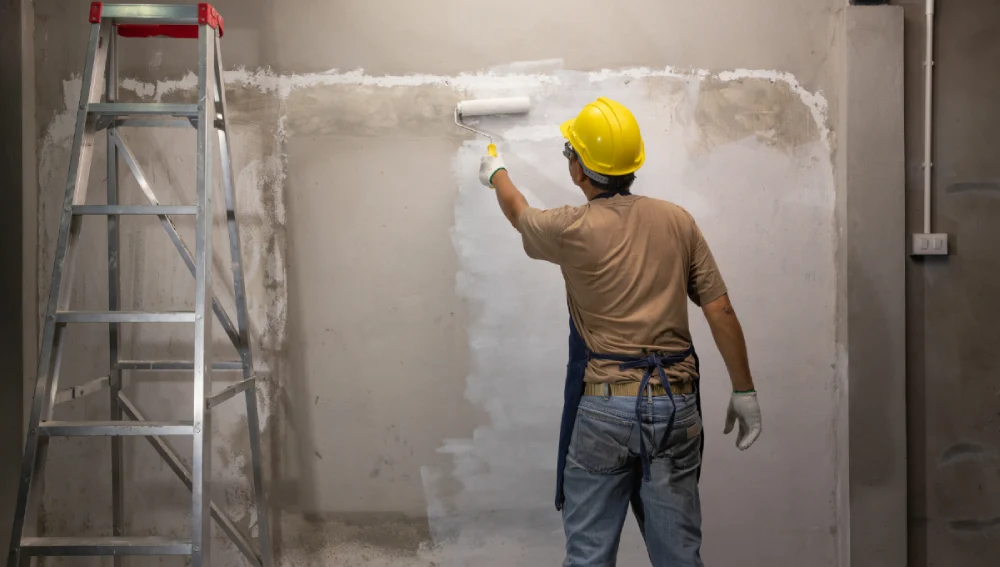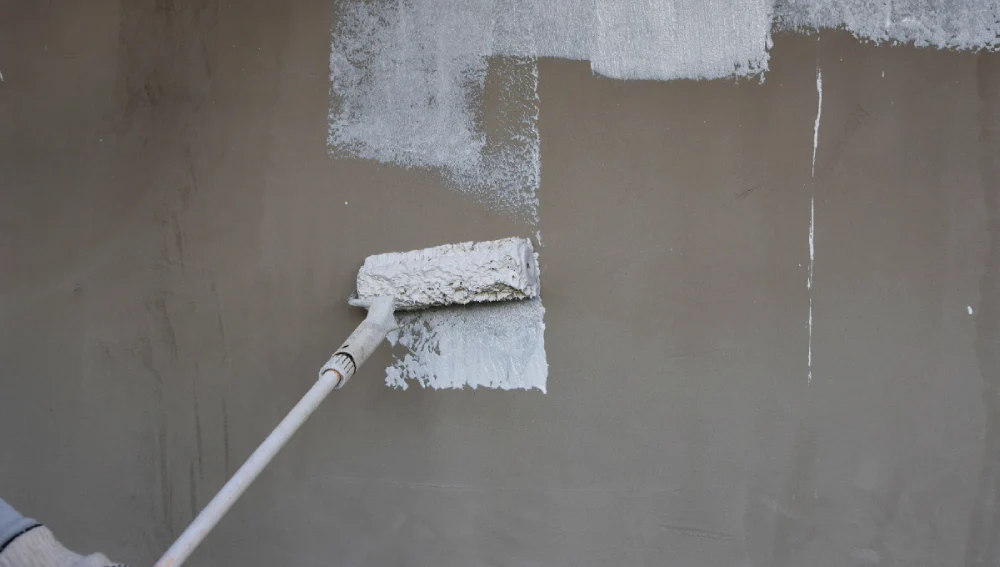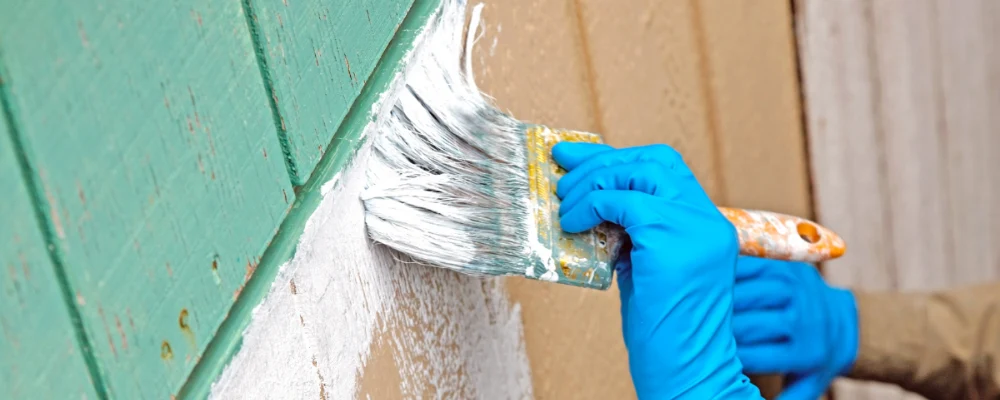An important step in construction that determines the success of the project is the preparation of the surface. It can be a residential building, a commercial building, or any other industrial building. The surface preparation quality will impact the final appearance and duration of the paint. The component used in this preparation is the primer.
Primer plays a significant role in the construction industry in improving paint adhesion, sealing underlying materials, and providing a uniform base for finish coating. This will help make the paint adhere properly and last for a long time. It also helps address problems like stains, rust, and uneven surfaces. Different types of primers are available for specific applications and materials. This blog helps you understand the different types of primers that are used in construction and helps you choose the correct one for your project.
Primer in Construction

The primary is undercoat flat and sticky paint that does not have any pigments attached to the wall and gives a consistent foundation for the top layers of paint. If the surface is not coated with primer, then there will be a need for additional paint coatings to get proper coverage.
The main purpose of applying primer is to provide a polished and professional look to the materials. It also helps seal porous surfaces, preventing the material from absorbing paint and creating a barrier between the material and the paint. This helps prevent cracking and peeling in the layers of paint. Different types of primers are used in construction available in the market. It is important to consider the primer based on the surface it is being used on and the material that needs to be applied.
Types of primers used in construction
Three main types of primers are used in construction. They are,
- Oil-based primer
- Latex primer
- Shellac primer
Oil-based primer
Oil-based primers can also be called alkyd primers. They are mainly designed to increase attention and improve the durability of the paint finishes. They can be applied in oil-based paints as well as latex paints, making them more versatile and suitable for various applications that include interior woods, exterior woods, metals, and previously painted surfaces. They are mainly composed of alkyd resins that can enhance adhesion and also block stains.
Oil-based primers are most effective in power services such as wood, and they can seal the surface and prevent tannins from bleeding through paint. They can also be used on metal surfaces, as they provide rust protection and corrosion resistance. Along with that, these primers also provide an excellent stain-blocking property that helps in covering imperfections like nicotine, water, and ink stains.
The main advantages of oil-based primers are stain-blocking properties, adhesion, and durability. They provide a flexible surface that helps prevent the paint coatings from expanding or contracting because of temperature variations. It can also be used in unfinished woods, varnished woods, and heavily weathered woods.
The main disadvantages of oil-based primers are that they emit volatile organic compounds (VOCs) and they need solvents for cleaning. They need more than twenty-four hours to dry. They are also difficult to clean from the painting equipment and are not effective if used on masonry surfaces directly.
Latex primer
Latex primer is also known as water-based primer. They include acrylic-based coatings for preparing surfaces for painting. They are composed of water-soluble materials that can help in getting a smooth and even application. This is mainly used in porous surfaces such as masonry, drywall, and previously painted walls.
Latex primers are mostly effective on drywall as they can provide uniform texture on the surface and produce a uniform base for paint. They are also suitable for masonry and already painted surfaces, as they can give good adhesion to latex or acrylic paints.
The main advantage of latex primers is that they are flexible and typically dry faster in about 3 to 4 hours when compared to oil-based primers. They help in equating the surface and covering the repair areas while reducing the volatile organic compound emissions and providing a healthy environment. They are easy to clean up and are more durable compared to oil-based primers.
The main disadvantage of lattice primers is they cannot be able to cover dark stains and deep discolorations. They are not suitable for hardwood and metal surfaces, although they do provide excellent resistance to cracking.
Shellac-Based Primers
Shellac primers are mainly made from natural resin. They have good stain-blocking abilities and fast-drying properties. They can be used along with oil-based and latex paints, as they have high adhesion capacity, which makes them suitable for various interior surfaces.
Shellac primers are effective for sealing the smell and covering the stubborn stains that may be caused by rust, smoke, and water. They can also be applied to wood, plaster, metal, plastic, and other materials. These primers are used in situations where severe damage needs to be covered, and the odour must be sealed.
The main advantage of using shellac-based primers is that they have a quick drying time, normally one hour. They are also highly adhesive. They can also be used to seal the pitch pockets, wood knots, and some stubborn tannin bleedings. They have qualities to block the stain.
The main limitation of using shellac primers is that they are not as versatile as oil primers or latex primers, and they produce strong and toxic fumes. They need some denatured alcohol for thinning and cleaning, which makes them more challenging to work with. Proper ventilation and protective gear are needed when using these primers.
How to Choose the Right Primer for Your Construction Project?

It is important to choose the correct primer for your construction project to get the desired result. Some of the factors that need to be considered while selecting the primers are,
- Type of the surface material – this is the primary consideration as there are different surfaces like wood, metal, or concrete that need specific primers to ensure proper adhesion and durability.
- Environmental factors – Some environmental factors like temperature, humidity, and exposure to elements can influence the performance of the primer, making it essential to select one that can withstand these conditions.
- Any specific needs for the project – the need for stain blocking, rust prevention, or mold resistance must be addressed by choosing a primer with the appropriate properties.
By carefully evaluating these factors, you can ensure that the primer you select will provide a solid foundation for your finishing coat, leading to a successful and long-lasting result.
Conclusion
An important step in the construction is the selection of the correct primer, as it can impact the long life and quality of the final paint. Understanding the different types of Primus that are available and their applications can help you achieve the best results for your project. Proper application techniques and attention to detail are important in the process of applying primer. Investing in quality primers and using best practices can help you in the long run, as it makes the surface look great and stand for a long time.
FAQs
Primer ensures a uniform surface, enhances paint adhesion, and helps the final paint job look polished and last longer.
Yes, especially oil-based and shellac-based primers due to their strong fumes.
It is best used on interior surfaces with severe stains or odours, like smoke or water damage.
Latex primers work well on drywall, masonry, and already painted surfaces.
A primer is a coating applied before the painting for improvement in address and the long life of the final paint.
Shellac primers are not ideal for exterior wood due to their lack of flexibility in varying weather conditions.

